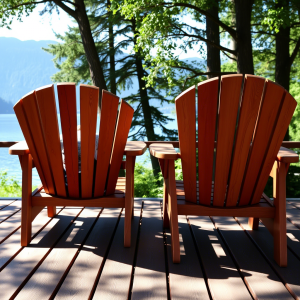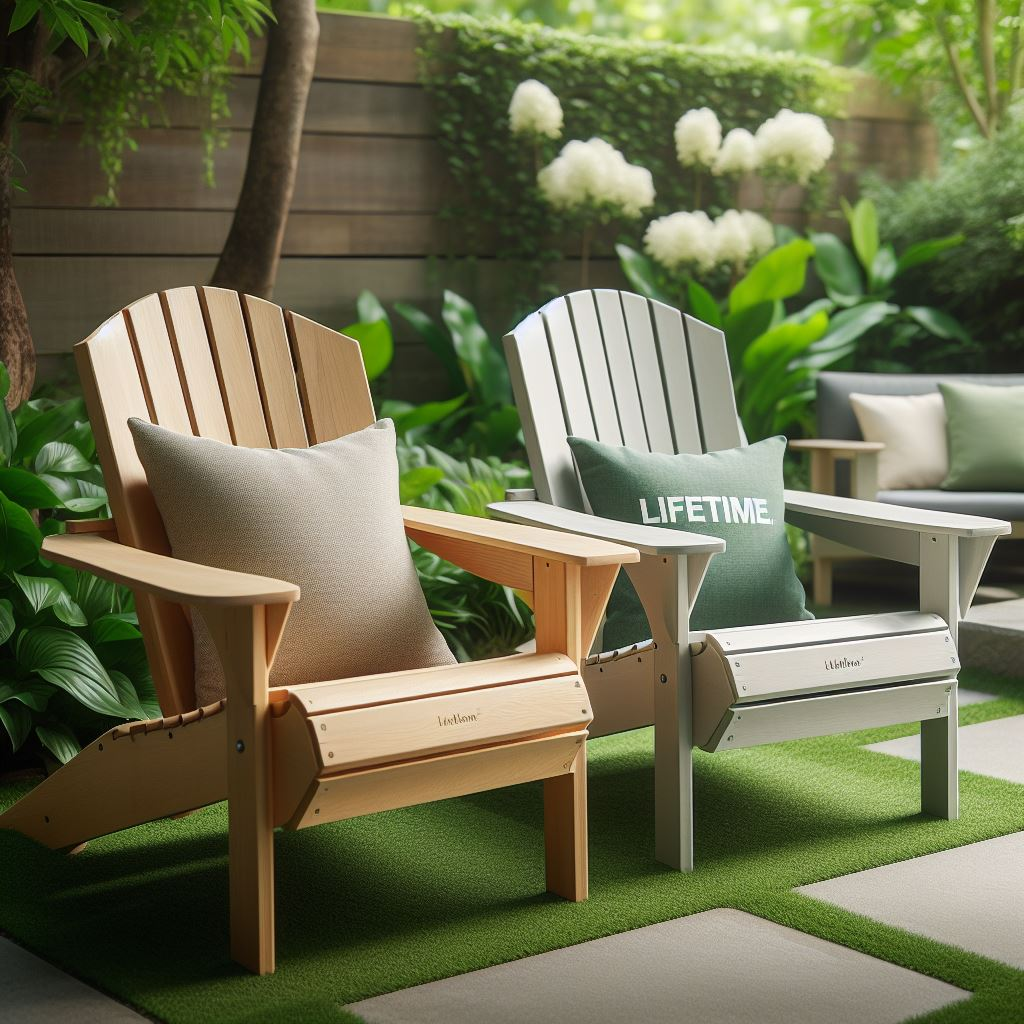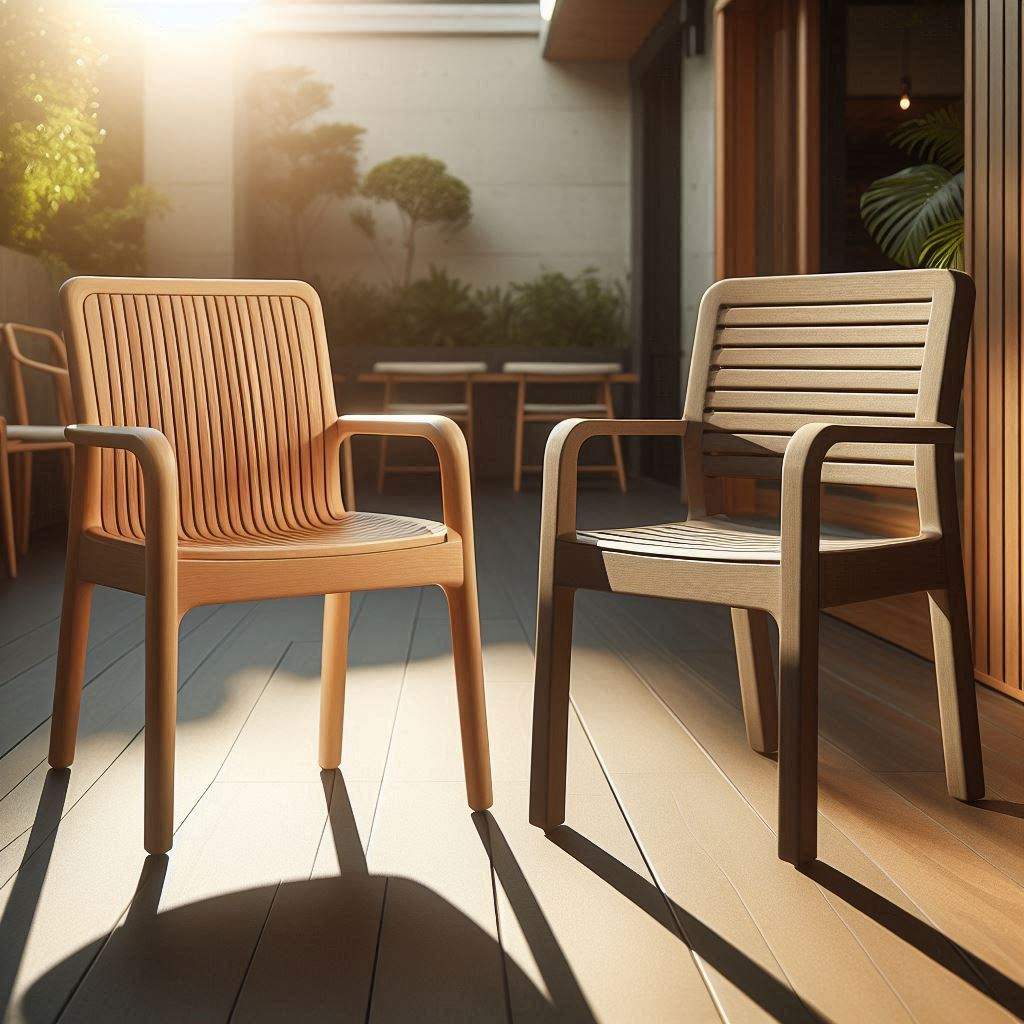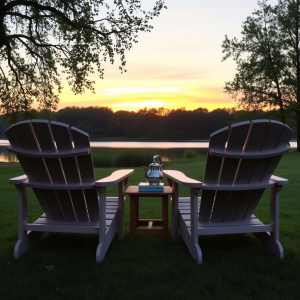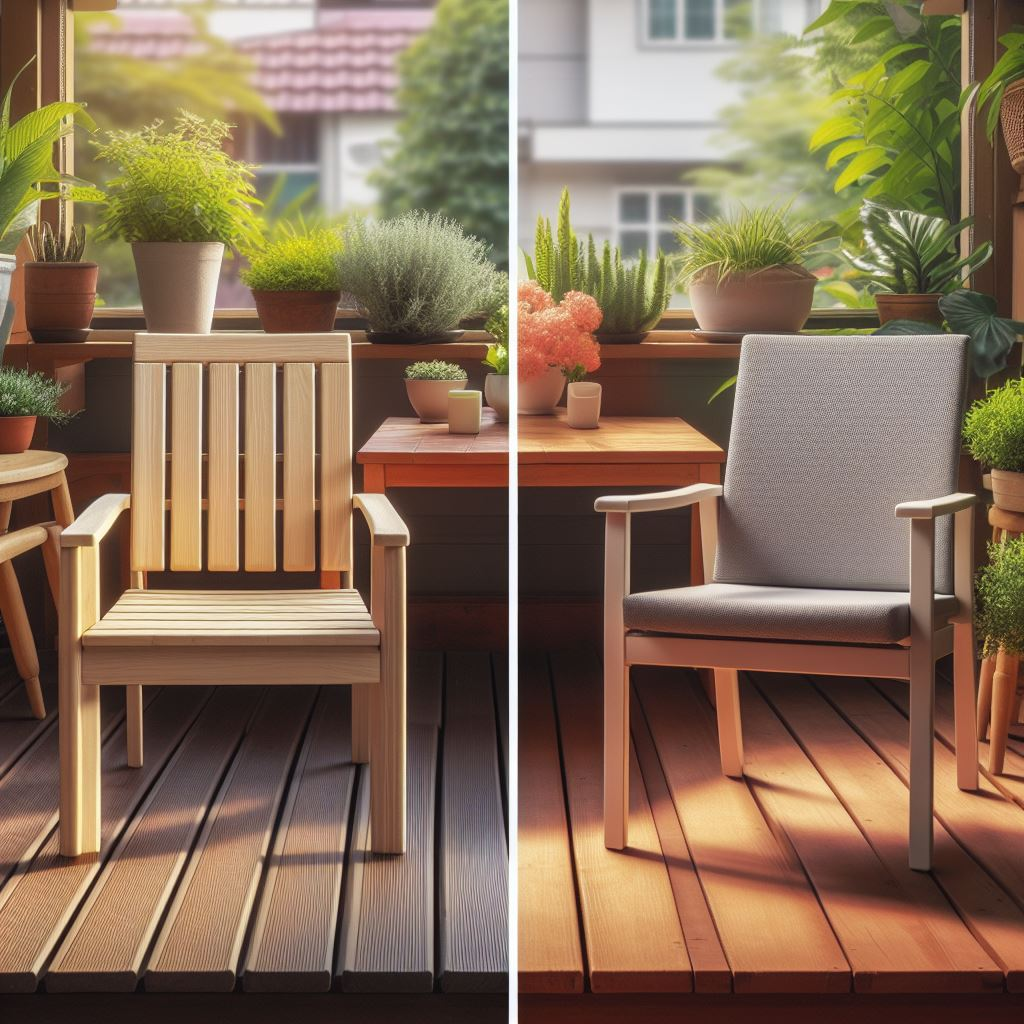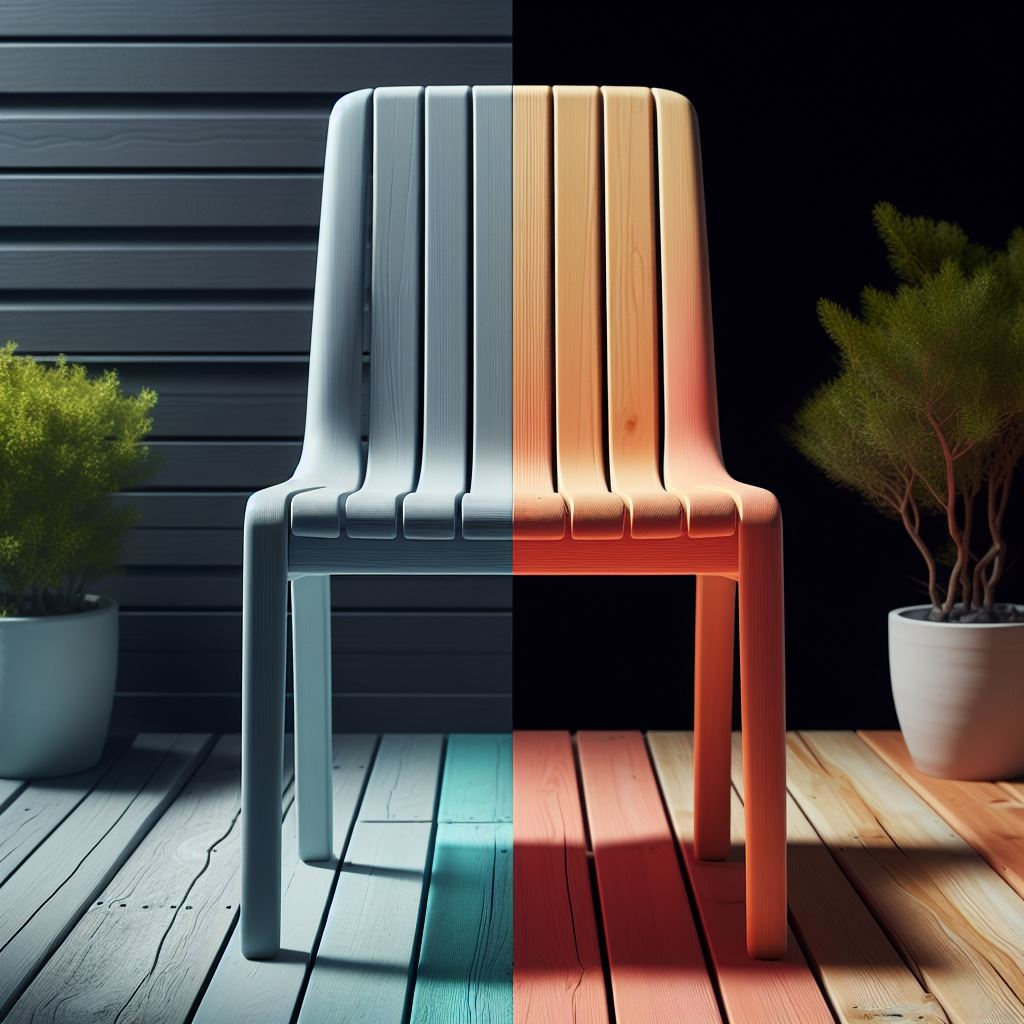If you’re looking for Adirondack chairs and are caught between resin or plastic, I totally understand. I’ve been there. Everyone has seen the shiny $30 models at the big-box store, and the premium resin claims to last a lifetime of outdoor use—there is a lot of marketing terminology thrown around!
Here’s a fact: While resin and plastic may look the same from a distance, they aren’t. Not at all. After nearly 20 years of testing outdoor furniture in my own backyard (think years of blazing sun, grimy rain, and frigid winter snow), I can tell you what’s really significant when choosing between resin vs plastic Adirondack chairs.
What Are Resin Adirondack Chairs?
Resin Adirondack chairs are made from high-performance synthetic materials—typically high-density polyethylene (HDPE) or polypropylene-based composites. Think of them as engineered plastics, purpose-built for durability and weather resistance.
Many top-tier resin chairs are made from recycled materials—like milk jugs and detergent bottles—then pressed into lumber-like boards that mimic real wood in look and feel. Brands like POLYWOOD and Highwood have perfected this formula, offering furniture that can survive for decades outdoors.
Quick features of resin Adirondack chairs:
- Made from HDPE or composite poly lumber
- Heavy, solid, and wind-resistant
- UV-stabilized and fade-resistant
- Designed to mimic the look of wood
- Usually backed by long warranties (10–20 years)
- Often made in the USA from recycled plastic
What Are Plastic Adirondack Chairs?
Plastic Adirondack chairs are usually injection-molded from low-density polyethylene (LDPE) or polypropylene—the same materials used in cheap outdoor toys or storage bins.
These are the chairs you’ll find for \$20 to \$60 at Walmart or Home Depot. They’re lightweight, stackable, and often brightly colored. But they tend to crack, fade, or warp after a season or two.
Key traits of plastic Adirondack chairs:
- Thin, hollow, lightweight design
- Smooth or glossy plastic texture
- Prone to sun fading and cracking
- Low cost and highly portable
- Usually lack warranties
- Often imported in bulk
Resin vs Plastic Adirondack Chairs: Side-by-Side Comparison
Here’s a detailed breakdown of how resin and plastic chairs stack up:
| Feature | Resin Adirondack Chairs | Plastic Adirondack Chairs |
|---|---|---|
| Material | HDPE, composite resin | LDPE, injection-molded plastic |
| Durability | 10–20+ years | 1–3 years |
| UV Resistance | Excellent | Fair to poor |
| Fade Resistance | Strong | Weak |
| Weight | Heavy (30–50 lbs) | Light (5–15 lbs) |
| Comfort | Contoured, ergonomic | Often rigid and flat |
| Appearance | Matte, wood-like | Glossy or smooth |
| Eco-Friendly | Made from recycled plastic | Rarely recyclable |
| Price Range | \$150–\$400 | \$20–\$80 |
| Warranties | 10–20 years common | Usually none |
Durability & Weather Resistance
In my experience, this is where resin chairs win by a landslide. My POLYWOOD Adirondack has sat through over 10 winters, fully exposed. No cracks. No warping. No fading.
Plastic chairs? Not even close. One cracked at the base after a single summer of UV exposure. Another warped so badly it rocked like a seesaw.
Why the difference?
- Resin (HDPE) is dense and structurally strong.
- Plastic (LDPE) is thin, soft, and brittle under stress.
Weight and Stability
- Resin chairs are heavy, which makes them excellent for decks, patios, or windy spots. They don’t get blown away.
- Plastic chairs are lightweight, which makes them easy to carry—but also easy to tip or fly off in storms.
If you live in a windy climate (like I do), resin is the only safe choice.
Comfort and Ergonomics
Not all Adirondack chairs are comfortable. Cheap plastic ones are often stiff, with awkward back angles and no contour.
Resin chairs are usually modeled after classic wood Adirondack designs, with:
- Sloped seats
- Curved backs
- Wide armrests
- Deep seating angles
In other words: built for lounging.
Visual Appeal: Finish, Color, Texture
This one comes down to taste—but also longevity.
Plastic chairs:
- Glossy and bright when new
- Tend to chalk or fade within 1–2 summers
Resin chairs:
- Textured to resemble real wood
- Richer, deeper colors (coastal gray, mahogany, cedar)
- Fade-resistant even under constant sun
If you want a cohesive, stylish patio setup that still looks good in 5 years, resin is your best bet.
Sustainability and Eco-Friendliness
This is a huge win for resin.
Many resin chairs are made from 100% post-consumer recycled plastic, helping keep waste out of landfills. Brands like POLYWOOD recycle over 400,000 milk jugs per day.
Meanwhile, plastic chairs are almost never recyclable once they crack or warp—and they often end up in landfills.
Pricing and Long-Term Value
Yes, resin chairs are more expensive up front. But not when you calculate their cost per year of use.
| Chair Type | Avg. Cost | Lifespan | Cost Per Year |
|---|---|---|---|
| Plastic | \$40 | 2 years | ~\$20/year |
| Resin | \$250 | 15 years | ~\$17/year |
And that doesn’t even account for the frustration of replacing broken plastic chairs every few seasons.
Top Brands: Resin Adirondack Chairs
POLYWOOD
- Made from: Recycled HDPE plastic
- Made in: USA
- Price: \$250–\$400
- Warranty: 20 years
- Notes: Industry leader. Heavy, solid, stylish. You’ll never need to replace it.
Highwood USA
- Material: Proprietary synthetic lumber
- Features: Eco-friendly, fade-proof
- Design: Extremely close to real wood look and feel
Trex Outdoor Furniture
- Partnership: POLYWOOD manufacturing
- Style: Premium coastal and contemporary options
- Sustainability: Uses Trex’s reclaimed wood-plastic composite
Top Brands: Plastic Adirondack Chairs
Adams Manufacturing
- Price: \$25–\$45
- Material: Injection-molded polypropylene
- Good for: Temporary seating, events, short-term use
Flash Furniture
- Material: Polypropylene
- Stackable: Yes
- Durability: Fair—better than ultra-cheap models but not for harsh weather
Lifetime Products
- Middle ground: Thicker, more durable plastic than others
- Price: ~\$100
- Better suited for dry, mild climates
When to Choose Resin vs Plastic
| Need | Best Choice |
|---|---|
| Long-term backyard seating | Resin |
| Frequent storms or wind | Resin |
| Tight budget or temporary use | Plastic |
| Rental property or Airbnb | Resin |
| Moving or frequent transport | Plastic |
| Sustainable, eco-conscious choice | Resin |
Maintenance & Cleaning
Both types are easy to clean with soap and water, but resin resists stains and mildew much better.
Pro tip: Use a soft brush and mild dish soap once a season. For resin, you’ll rarely need more than that.
Avoid power-washing plastic chairs—it can cause cracks.
Common Misconceptions
“Aren’t resin and plastic the same?”
→ No. Resin is a specific type of engineered plastic. Most resin chairs are made from HDPE, which is far stronger and denser than typical plastic.
“Plastic chairs are eco-friendly because they’re recyclable.”
→ Usually false. Most municipal systems won’t recycle cracked or molded plastic chairs.
“Resin chairs are too expensive.”
→ Only if you’re thinking short-term. Over 10–20 years, they’re often the cheaper choice.
Final Thoughts: Which One Should You Buy?
If you care about:
- Long-term durability
- Visual appeal
- Wind resistance
- Eco-sustainability
- Comfort
…go with a resin Adirondack chair. It’s not even close.
But if you need:
- A few chairs for a party
- Budget-friendly seating
- Lightweight, stackable options
…then plastic chairs can still serve a purpose—just don’t expect them to last.
From someone who’s replaced too many brittle plastic chairs in my lifetime: resin is worth it.
FAQs
Q: Can I leave resin chairs outside all winter?
Yes—especially HDPE chairs. They’re built for extreme weather.
Q: Do resin chairs get hot in the sun?
Only in dark colors. Go for white or tan if you’re in a hot climate.
Q: Are plastic Adirondack chairs stackable?
Usually, yes. Resin chairs often aren’t.
Q: Are all resin chairs heavy?
Most are—but some brands offer lighter, foldable options.
